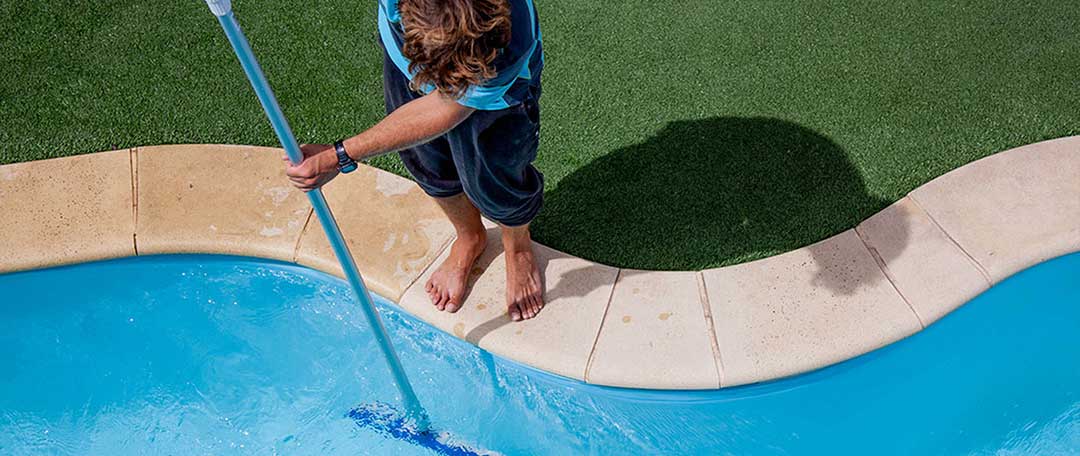Black algae is a notorious invader in the pool world, presenting a stubborn challenge for pool owners. Unlike other types of algae, black algae are incredibly resilient and difficult to eliminate. This blog will explore why black algae removal is so hard to accomplish, what makes it different, and the strategies you can employ to tackle this persistent problem. Additionally, using a pool robot can significantly assist your pool maintenance.
Understanding Black Algae
Black algae are cyanobacteria, bacteria that thrive in warm, sunny environments. They form dark, slimy patches on pool surfaces, particularly in porous areas like grout and concrete. Black algae can also appear on vinyl and fiberglass surfaces, albeit less commonly. These bacteria are adept at surviving harsh conditions, making them a persistent problem in pools.
Why Black Algae Is Hard to Remove
Here are several factors that contribute to the difficulty of removing black algae:
● Resilient Structure: Black algae have a tough outer layer that protects them from common pool chemicals. This protective layer makes it hard for chlorine and other sanitizers to penetrate and kill the bacteria. The outer layer acts as a shield, allowing the algae to survive standard cleaning and treatment efforts.

● Deep Root System: Unlike other algae that grow superficially, black algae develop deep roots that anchor them firmly to pool surfaces. This root system allows them to withstand scrubbing and chemical treatments. The roots penetrate porous surfaces like grout and plaster, making complete removal difficult without aggressive methods.
● Slow Growth Cycle: Black algae grow slowly, making it difficult to notice and address early. By the time they become visible, they have often established a strong presence, making removal more challenging. Their slow growth means they can establish a robust foothold before detection.
● Resistance to Chemicals: Black algae can develop resistance to common algaecides and chlorine, requiring higher concentrations and more potent treatments to eradicate them. Over time, these bacteria can adapt to lower levels of treatment, necessitating more robust and more frequent applications.
Effective Strategies for Removing Black Algae
● Brushing and Scrubbing:
Use a stiff-bristled brush to scrub the affected areas vigorously. This helps break the protective layer and expose the algae to chemical treatments. Regular and thorough scrubbing is essential to disrupt the algae’s defenses.

● Shock Treatment:
Superchlorination, or “shocking,” involves adding a hefty dose of chlorine to the pool. This helps kill the exposed algae and disinfect the water. Brushing is essential to ensure the chlorine penetrates the roots. Multiple shock treatments may be necessary for severe infestations.
● Specialized Algaecides:
Use algaecides specifically designed to target black algae. These products contain potent chemicals that penetrate the tough outer layer and kill the algae. Look for products labeled as effective against black algae, and follow the manufacturer’s instructions for best results.
● Regular Maintenance:
Regular maintenance is crucial to avoid black algae infestation. To prevent algae from taking hold, maintain proper water chemistry, clean the pool regularly, and ensure adequate circulation. Regular testing and balancing of pool water chemistry and routine cleaning can prevent black algae from gaining a foothold. Using a pool robot as your assistant can significantly enhance your pool maintenance routine. Pool robots automate thorough cleaning of surfaces, ensuring no spot is missed, and help maintain consistent water circulation, which is essential for distributing chemicals evenly. Additionally, they save time on manual scrubbing and vacuuming, enhance filtration by capturing fine debris and algae spores, and can be set to run regularly, keeping the pool consistently clean.
Conclusion
Black algae is a formidable adversary for any pool owner, but understanding why it is hard to remove and implementing effective strategies can help you win the battle. Regular maintenance and targeted treatments can keep black algae at bay and ensure your pool remains clean and safe.



